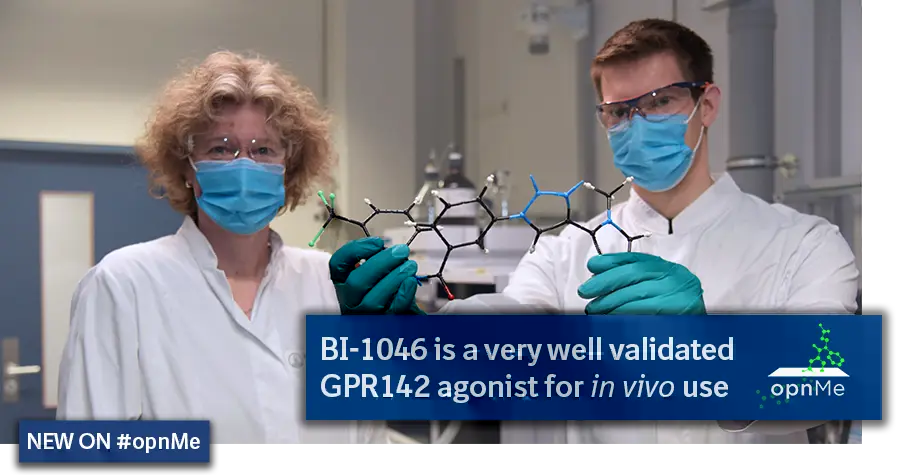BI-1046: A highly potent GPR142 agonist is now available to order on opnMe.com
15 March 2021
G protein-coupled receptors (GPCRs) are important cell surface receptors that play a key role in signal transduction. Though there are numerous types of GPCRs, only a small set of receptors have been well characterized and used as drug targets so far. GPR142 is a member of the rhodopsin family of GPCRs. This Gq-coupled receptor is highly expressed in pancreatic cells.
BI-1046 has been identified as a potent and selective GPR142 agonist which increases Gq-coupled signaling in cells of recombinant and endogenous receptor expression. The GPR142 agonistic activity of BI-1046 has been demonstrated to improve glucose tolerance in mice when investigated in an acute oral glucose tolerance test.
As a researcher, you are now able to obtain BI-1046 and its negative control BI-4420 completely free of charge. You will own all results you will generate with the molecules and may use them for your own publications.
Subscribe to our newsletter to stay updated as we add new molecules to opnMe.com.
About BI-1046
BI-1046 is a GPR142 agonist that qualifies for in vivo experiments. It displays high potency with an IC50 of 0.05 nM in an IP1-based cellular assay to test the effect of the compounds on GPR142. BI-1046 has high permeability on CACO and MDK cells, also showing high stability in rat microsomes and moderate stability in rat hepatocytes. BI-4420 is a structurally related negative control of BI-1046. The 2-furanyl substituent in BI-4420 compared to the N-Methyl imidazolyl ring renders it inactive on both human and mouse GPR142.
About opnMe:
opnMe.com, the new open innovation portal of Boehringer Ingelheim, aims to accelerate research initiatives to enable new insights of disease biology in areas of high unmet medical need by sharing well-characterized molecules and offer collaborations for science. In the spirit of collaboration, our molecules are provided to the scientific community to help unlock and fulfill their full potential. These molecules are either freely available as “Molecules to Order” or applied via scientific research submissions as “Molecules for Collaboration”. As part of our third pillar, our “opn2EXPERTS” program, we also enlist scientific advice on key biologic issues to fuel further drug discovery and deliver novel solutions that benefit unmet patient needs.



